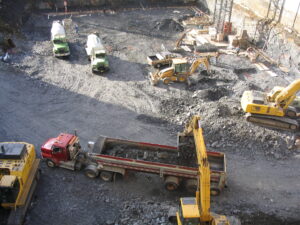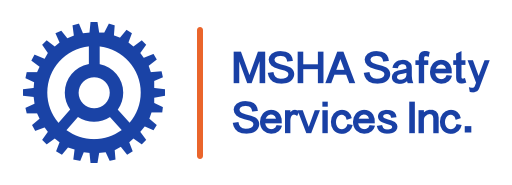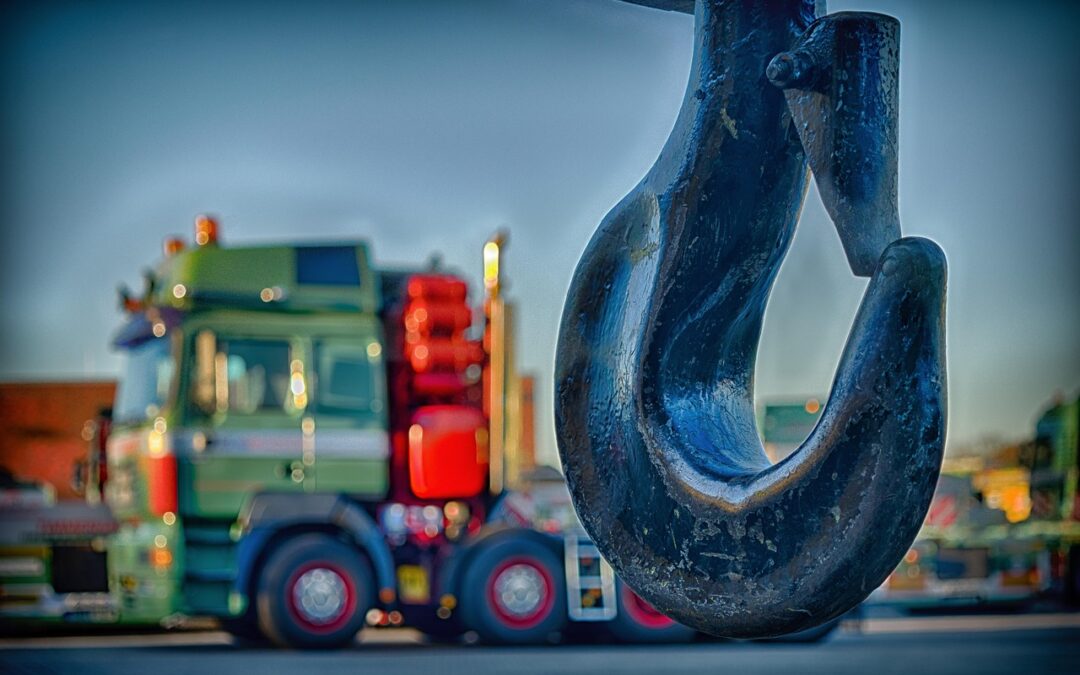Towing and rigging are routine activities in mining operations, but when performed incorrectly, they can quickly become deadly. From snapped chains to runaway loads, towing incidents cause serious injuries and fatalities every year on mine sites. Proper towing safety starts with understanding the right equipment, mastering rigging techniques, and securely blocking every load.
This article covers the essentials—from regulatory requirements and inspection checklists to managing risks in mining towing operations—so your team stays safe, compliant, and prepared. Because when it comes to towing, shortcuts aren’t just risky—they can be life-threatening.
Understanding the Basics of Towing and Rigging Safety
Towing and rigging are processes across industries like mining, construction, and transport. These heavy-duty tasks come with inherent risks, which can be minimized through proper safety knowledge. Rigging involves securing and preparing loads for lifting, pulling, or towing using cables, chains, hooks, and lifting gear. Whether towing a broken truck or moving heavy mining machinery, safety must come first. Every rigging operation should be carefully planned, inspected, and executed by trained personnel familiar with the equipment and hazards involved.
Common Rigging Hazards and How to Avoid Them
Many rigging accidents stem from equipment failure caused by overloading or using damaged gear, improperly secured loads, and poor communication during operations. Additionally, pinch points and snapback zones pose significant dangers if personnel are positioned incorrectly. To avoid these hazards, gear must be inspected before every use, and workers should always stay clear of tension lines where a snapped cable could recoil. Communication is essential—using agreed-upon signals or radios helps keep everyone coordinated and aware. Understanding these risks and taking precautions is central to safe towing and rigging.
Towing Laws, Regulations, and Compliance Tips
Towing and rigging activities are tightly regulated to protect workers and the public. In the U.S., OSHA and MSHA oversee industrial and mining operations respectively, while DOT governs towing on public roads. State-specific laws may also apply. Compliance means knowing the rated capacity of your equipment, following all applicable MSHA or OSHA guidelines, keeping thorough documentation of inspections and maintenance, and ensuring all operators are certified and trained for their roles. Staying up to date with regulations reduces liability and improves safety outcomes.
Essential Towing Equipment and How to Use It Safely
Successful towing depends on having the right tools: tow chains, cables, shackles, hooks, winches, recovery straps, and tow bars or hitches. Each piece serves a specific purpose—chains excel at handling static loads, while recovery straps offer flexibility and absorb shock. To prevent accidents, equipment should always be matched to the load and inspected for wear or damage. Importantly, gear must never be used beyond its rated limits, as misuse is a leading cause of preventable towing incidents.
How to Choose the Right Rigging for Your Load
Selecting the correct rigging depends on the weight, shape, and size of the load, as well as the angle and type of lifting or towing equipment. Consulting load charts and choosing rigging with a working load limit that comfortably exceeds the load’s weight are crucial steps. It’s also important to factor in dynamic forces since movement can increase strain on rigging components. Careful selection helps ensure that the rigging setup can handle all stresses safely during the operation.
Weight Limits, Load Balancing, and Safe Load Distribution
Proper load management is essential to safe towing. Overlooking weight limits or failing to balance a load can cause dangerous tip-overs or equipment failure. Always weigh your load accurately and distribute the weight evenly across all rigging points to maintain stability. Avoid shifts in the center of gravity by securing the load tightly and, when necessary, using spreader bars to help balance large or awkward items. These measures reduce the risk of accidents stemming from unbalanced or overloaded setups.
Step-by-Step Guide to Proper Rigging Techniques
A reliable rigging procedure begins with inspecting all equipment such as slings, hooks, and chains to ensure they are in good condition. Then, determine the load’s weight and center of gravity to select the most appropriate rigging gear and lifting points. Attach rigging securely, paying close attention to angles and hitch types, and clear the area of anyone not essential to the operation. During the lift or tow, move slowly and steadily, monitoring the load constantly and stopping immediately if anything seems unsafe. Following this process consistently helps maintain safety and efficiency.
Pre-Trip Inspection Checklist for Safe Towing
Before any towing operation, it’s important to complete a thorough inspection of both the vehicle and load.
- Check tire pressure and wheel condition, verify that brakes and lights function properly, and ensure tow bars, hitches, or chains are secured correctly.
- Confirm the load and rigging are stable and that weight limits are not exceeded.
- Finally, verify that all personnel involved are wearing proper personal protective equipment.
Taking just a few extra minutes for this pre-trip check can prevent serious problems and injuries later.
Mining-Specific Rigging and Towing Best Practices
Mining presents unique challenges such as uneven terrain, heavy machinery, and remote locations. These require tailored towing approaches like using low-profile towing equipment that can navigate rough ground, double-checking rigging under load to prevent unexpected failures, training spotters and signalers to guide movements safely, and maintaining a clear safety perimeter around the towing zone. Given the demanding conditions, prioritizing towing safety in mining is non-negotiable.
Managing the Risks of Towing Equipment in Mining Operations
Heavy equipment towing in mines involves risks including rollovers on unstable ground, load detachment on slopes, and limited operator visibility. Managing these risks starts with careful route planning and employing ground guides to maintain safe control. Monitoring weather and terrain conditions allows for informed decisions, and enforcing slow-speed towing rules helps prevent sudden shifts or accidents. Integrating risk management into every towing plan increases safety and operational success.
Preventing Fatalities and The Importance of Blocking and Securing Equipment
Blocking and securing loads is a simple but important safety step that can save lives. Loads must be properly chocked, cribbed, or blocked to prevent any movement during towing or lifting operations. Fatal accidents have occurred due to skipping this step—even on apparently flat surfaces. Wheels should always be chocked and suspended loads securely blocked, never relying solely on gravity to hold the equipment in place. This straightforward precaution greatly reduces the risk of runaway loads.

Training and Emergency Preparedness for Towing Operations
Everyone involved in towing (operators, ground personnel, and supervisors) must receive thorough training. This training should cover load calculations, equipment inspections, hazard recognition, and emergency response protocols. Additionally, having first aid kits, clear rescue plans, reliable communication tools such as radios, and fire extinguishers readily available is essential. Well-prepared teams can respond faster and more effectively when incidents occur.
Protecting Lives with Proper Rigging and Towing Safety
When towing and rigging are done correctly, heavy loads are moved safely and efficiently. Cutting corners, however, risks serious injury or death. Following best practices for towing safety helps foster a culture of accountability and preparedness. From selecting the right gear to performing post-operation checks, safety must be prioritized every step of the way to protect lives and maintain operational integrity.

